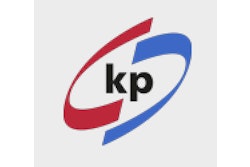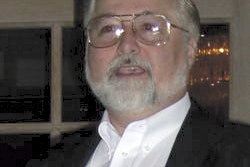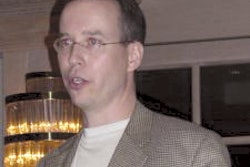Management at Grandview, MO-based Peterson Manufacturing Co. recently decided it was time to automate the packaging line for its 440 Series trailer lighting kits. The trifold, hinged clamshells previously used to house the multicomponent kits had a button-snap closure that employees complained hurt their wrists.
“One major reason to automate the packaging for the kits was ergonomics,” says Tobe Tennyson III, manager of manufacturing engineering at Peterson. “All the packaging for our trailer lighting kits was done manually and the hinged clamshells we were using hurt employees’ wrists. We were getting one or two serious complaints a year, and that wasn’t good.”
Thanks to new two-piece blister packaging from Klöckner Pentaplast and a 20-station radio frequency sealing machine from Alloyd, Peterson has seen orders for its product increase while it has lowered production costs and increased materials savings.
“It’s a much better looking package, I think, and so do others,” Tennyson says. “It’s popular in retail circles. We produced tens of thousands with the old trifold clamshell packaging. With this new design, we’re getting additional ‘pop’ from our planogram, which has boosted sales considerably.”
Tennyson credits much of the package’s improved aesthetics to the vinyl rigid film from Klöckner. He says the sleek new look of the packaging recently contributed to a decision by Peterson’s biggest customer, who recently increased their order significantly to fill out end caps.
The package’s compact size is also contributing to increased sales. The new packaging is significantly smaller than the previous packaging. For example, the dimensions for model V544, intended for trailers larger than 80”, is 2” smaller than its predecessor. In this particular pack, customers will find submersible lights, a 23’ trailer harness, 48” trunk connector, plastic license bracket, all mounting hardware, and installation instructions.
“The smaller size means that in-store display planograms can hold more SKUs, of which there are a total of five in the series,” says Mark Assenmacher, Peterson’s marketing manager.
Lowering production, materials costs
According to Peterson, Klöckner’s flexibility was also key in keeping costs down. Because Peterson was previously using two different clamshell suppliers, volumes bought from each supplier stayed relatively low and costs stayed high. Now, because of the new design, different models can be packed in the same type of package.
“We’re getting more bang for our buck,” Assenmacher says. “The slower-moving models are riding along on the coattails of the faster-selling ones.”
Plus, by consolidating the packaging, there are fewer tooling changeovers for Peterson, resulting in a 20-minute changeover, increasing productivity, and reducing downtime.
Packaging costs are further reduced by using two different material gauges—one for the front and the other for the back of the two-piece blister pack. A thinner material gauge of .020” is used for the front of the blister, while the thicker material gauge of .025” is used for the deeper draw ratio on the blister’s back. The back gauge is heavier because it supports more of the weight of the product, while the front is shallower and holds less of the weight of the package.
To Assenmacher, the biggest benefit of the cost savings is that it allows Peterson to maintain the current price point.
“We can be much more competitive on the foreign front,” he says. “With this new packaging design and our reengineered processes, we make and sell products at a profitable price while offering all sorts of value-added benefits to our retail channels.”
Additional savings come from the new packages’ tamper resistance. Consumers would open the previous packaging and steal the product.
“The new kits are much more difficult to break into,” Tennyson says. “We’re probably losing one tenth of what we were with the old packaging.”
The mechanics behind the savings
The Alloyd sealing machine is equipped with an oval, racetrack conveyor with 20 aluminum cavities that advance every 4 or 5 sec, depending on the machine pace set by the operator. Preformed back blisters are automatically plucked from a magazine chute and dropped into a cavity. Operators manually load kit parts and insert paperboard cards into the back blisters as they move past their stations on the carousel track.
At a later station, the machine automatically feeds front blisters from a second magazine chute onto the fully assembled package. From there, the kit enters a shielded sealing station where radio frequency energy welds the plastic edges of the blister together all around its perimeter. Packaged kits are automatically ejected from the machine and loaded by four into shipping cases.
Packaging automation has enabled Peterson to decrease the number of employees on this line from eight to four.
“Productivity is more efficient. We get a few more kits out per day than we did in the past,” Tennyson says.
Employees are so fond of the new process that Tennyson jokes that if he tried to take the 20-station RF sealer away from them now, “There would be mutiny.” —ALR

























